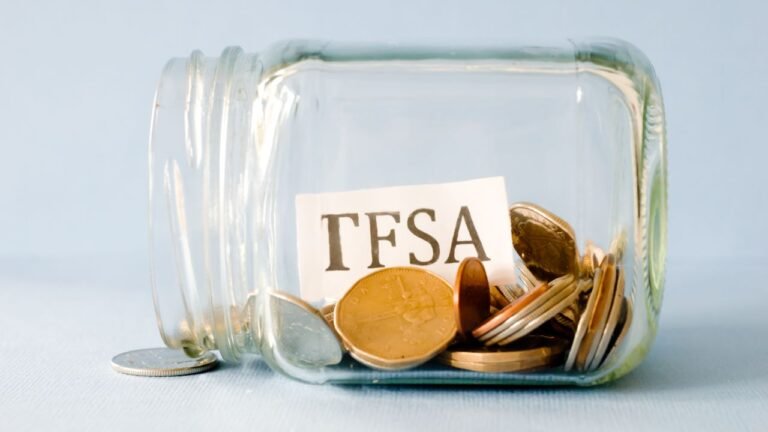Registered Retirement Savings Plans (RRSPs)
Introduction
Planning for retirement is a cornerstone of financial security, allowing you to enjoy your later years without the stress of financial instability.
At the heart of retirement planning in Canada is the Registered Retirement Savings Plan (RRSP), a government-approved scheme designed to help Canadians save for their retirement.
Understanding RRSPs
What is an RRSP?
An RRSP stands as a pivotal tool in the Canadian financial landscape, offering individuals a conduit to set aside funds for retirement while reaping immediate tax benefits.
Its inception traces back to 1957, evolving over decades to adapt to the changing needs of Canadians, symbolizing a commitment to fostering a secure post-work life.
How RRSPs Work
Contributing to an RRSP is straightforward yet profoundly impactful. Each contribution potentially lowers your taxable income for the year, deferring the tax until funds are withdrawn, typically during retirement at a possibly lower tax rate. Annually, the Canada Revenue Agency sets a maximum contribution limit, providing a window of opportunity to build your retirement nest egg.
The Benefits of Investing in RRSPs
Tax Deferral and Reduction
The allure of RRSPs largely lies in their tax-deferred nature. Contributions reduce your current taxable income, leading to immediate tax savings. Over time, the power of compound growth works its magic, amplifying your savings without the immediate drag of taxes.
Planning for the Long Term
RRSPs are a linchpin in crafting a robust financial future. By serving as a versatile component of a broader investment portfolio, RRSPs pave the way for achieving long-term financial goals and a stable retirement.
RRSP Contribution Strategies
Determining Your Contribution Room
Your Notice of Assessment from the CRA is your roadmap to understanding how much you can contribute each year. Keeping abreast of this limit ensures you’re maximizing your potential savings without overstepping boundaries.
Making the Most of Your Contributions
The debate between lump-sum and regular contributions is perennial. Coupled with the strategy of spousal RRSPs, these approaches provide avenues for tax-efficient income splitting in retirement, optimizing the financial benefits for couples.
Investment Options Within RRSPs
The investment spectrum within RRSPs is broad, encompassing mutual funds, stocks, bonds, and more. This diversity allows for tailored risk management and asset allocation, aligning with individual financial goals and risk tolerances.
RRSP Withdrawal Rules and Considerations
Understanding the RRSP Maturity Limit
As you approach the age of 71, your RRSP journey transitions, necessitating a shift to either a Registered Retirement Income Fund (RRIF), purchasing an annuity, or opting for a lump-sum withdrawal, each with its unique implications.
The Home Buyers’ Plan (HBP) and Lifelong Learning Plan (LLP)
RRSPs offer flexibility beyond retirement savings, including the ability to fund significant life milestones like purchasing a first home or pursuing further education, under the HBP and LLP respectively, with specific conditions and repayment requirements.
Tax Implications of Withdrawals
Withdrawal strategies are paramount in retirement, as they impact your tax bracket and overall financial well-being. Thoughtful planning can mitigate tax liabilities, ensuring a smoother financial transition into retirement.
RRSP Mistakes to Avoid
Overcontributing and Its Penalties
Vigilance is key to avoid the pitfalls of overcontributing. Exceeding your contribution room can incur penalties, although a $2,000 grace amount offers a buffer. Swift action and communication with the CRA can rectify inadvertent overcontributions.
Neglecting to Plan for Taxes Upon Withdrawal
Anticipating the tax implications of RRSP withdrawals is crucial. Without strategic planning, retirees might face unexpected tax burdens, underscoring the need for foresight in RRSP management.
Forgetting to Designate Beneficiaries
Estate planning is an integral part of RRSP management. Designating beneficiaries ensures your assets are distributed according to your wishes, avoiding complications and potential conflicts.
RRSP vs. TFSA: Complementary Strategies
Differences Between RRSPs and TFSAs
While both RRSPs and Tax-Free Savings Accounts (TFSAs) are instrumental in financial planning, they differ in tax treatment, contribution limits, and withdrawal rules. Understanding these distinctions is vital in leveraging both accounts effectively.
How to Use Both for Optimal Financial Planning
Integrating RRSPs and TFSAs into your financial strategy can provide a balanced approach to savings and investments, accommodating both short-term needs and long-term goals.







